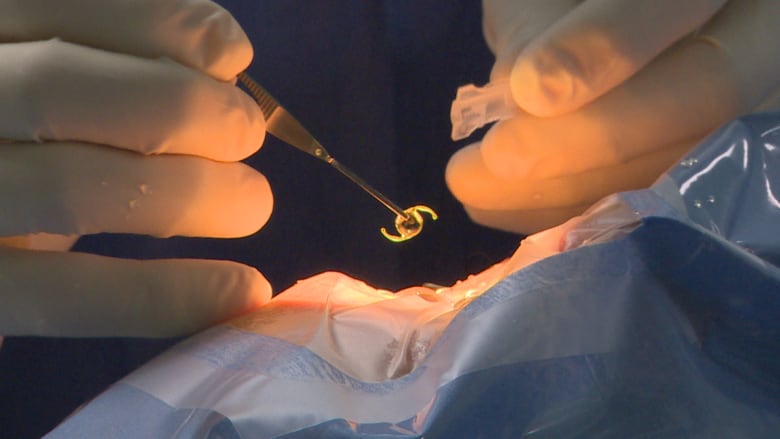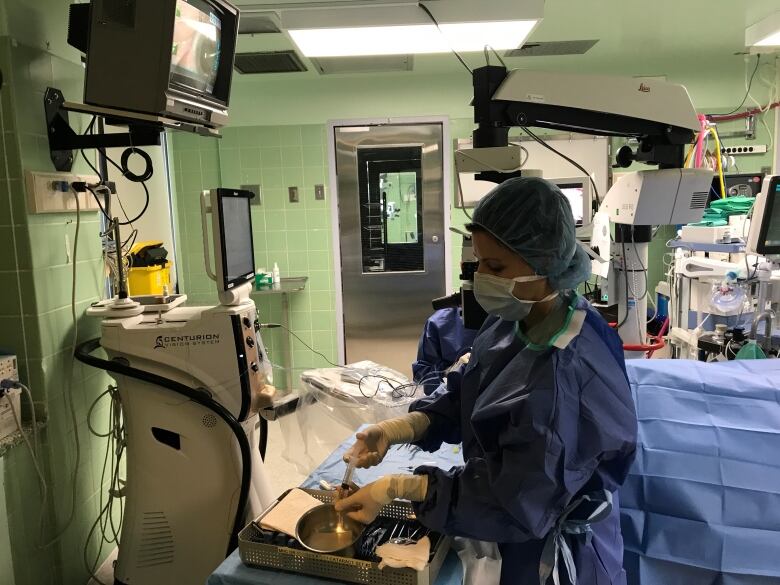No-sedation cataract surgeries aim to reduce Manitoba wait list
Roughly 200 optional no-sedation procedures performed since trial run started in August

A Winnipeg hospital specializing in eye treatments is testing out optional no-sedation cataract surgeriesas part of an effortto tackle an 8,500-person-long wait list for the treatment in Manitoba.
"The appeal is using fewer resources, basically, to get the same job done," said Dr. Mathen Mathen, head of ophthalmology with the Winnipeg Regional Health Authority.
Misericordia Health Centre's Eye Care Centre of Excellence started a trial run of the no-sedation procedures in August and has since performed close to 200 of the surgeries, Mathen said.
The no-sedation option is only available for surgeries on cataracts, clouding of the eye's natural lens due to aging, blunt trauma or some diseases, and can only be provided to low-risk patients.
The practice has already been in use in Brandon for three or four yearsand is common in hospitals across the country, Mathen said.
- Misericordia's closure left huge hole in care, area residents say
- Misericordia eye care centre to remain open 24/7
Mathensaid the proceduresaves some time roughly five minutes per procedure and valuable resources, eliminating the need for anesthesia and the personnel to administer it.
"If we save money doing it this way, we can do more [procedures]" he said. "The whole limit of cataract surgery in this province is how much we're funded for."

Laura Campbell had a no-sedation treatment on a cataract in her left eye on Tuesday. It was her first eye surgery and she said it went very well.
The procedure involves removing the eye's natural lens and replacing it with an artificial one, called an intraocular lens.
"They put some eye drops in my eye, pre-surgery, and then took me down to the surgical suite and took my lens out of my eye and put in the new lens that is not cloudy anymore," she said.
"I was a little nervous, but I trusted [the surgeon]."
Campbell said the surgery lasted between 10 and 15 minutes, and she felt more or less normal afterwards.
Meeting to review trial next week
Mathen said the trial run has gone smoothly thus far.
"We'd like to continue, but our departmental meeting is next week to see, you know, how people favoured it or not," he said.
Feedback has been mixedbut mostly positive, he said.
"We've had varying reports. There's generally been favourable, but we've also had patients complain that it's more painful and they feel it more [during the surgery] and it can be uncomfortable at times," he said.












_(720p).jpg)


 OFFICIAL HD MUSIC VIDEO.jpg)
.jpg)



























































































